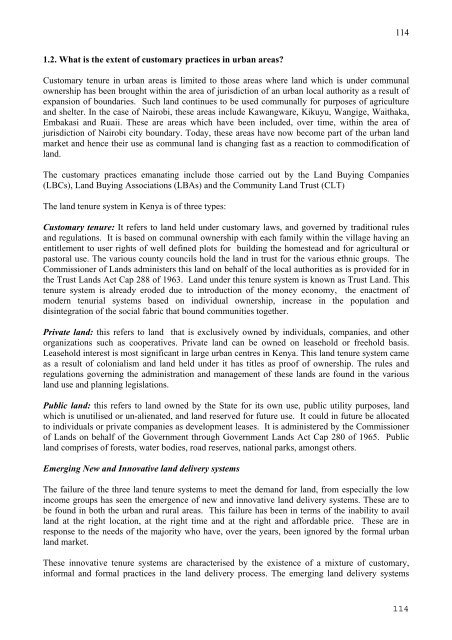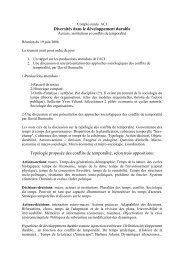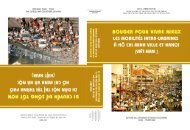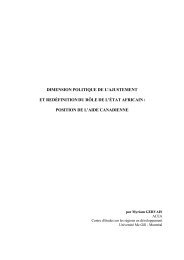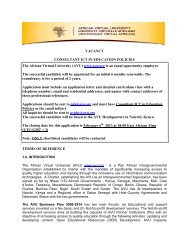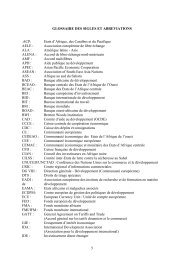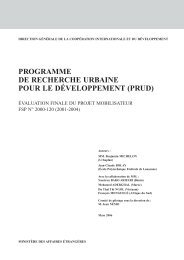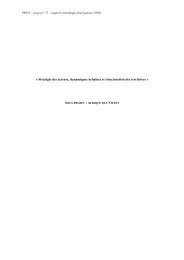You also want an ePaper? Increase the reach of your titles
YUMPU automatically turns print PDFs into web optimized ePapers that Google loves.
1141.2. What is the extent of customary practices in urban areas?Customary tenure in urban areas is limited to those areas where land which is under communalownership has been brought within the area of jurisdiction of an urban local authority as a result ofexpansion of boundaries. Such land continues to be used communally for purposes of agricultureand shelter. In the case of Nairobi, these areas include Kawangware, Kikuyu, Wangige, Waithaka,Embakasi and Ruaii. These are areas which have been included, over time, within the area ofjurisdiction of Nairobi city boundary. Today, these areas have now become part of the urban landmarket and hence their use as communal land is changing fast as a reaction to commodification ofland.The customary practices emanating include those carried out by the Land Buying Companies(LBCs), Land Buying Associations (LBAs) and the Community Land Trust (CLT)The land tenure system in Kenya is of three types:Customary tenure: It refers to land held under customary laws, and governed by traditional ru<strong>le</strong>sand regulations. It is based on communal ownership with each family within the village having anentit<strong>le</strong>ment to user rights of well defined plots for building the homestead and for agricultural orpastoral use. The various county councils hold the land in trust for the various ethnic groups. TheCommissioner of Lands administers this land on behalf of the local authorities as is provided for inthe Trust Lands Act Cap 288 of 1963. Land under this tenure system is known as Trust Land. Thistenure system is already eroded due to introduction of the money economy, the enactment ofmodern tenurial systems based on individual ownership, increase in the population anddisintegration of the social fabric that bound communities together.Private land: this refers to land that is exclusively owned by individuals, companies, and otherorganizations such as cooperatives. Private land can be owned on <strong>le</strong>asehold or freehold basis.Leasehold interest is most significant in large urban centres in Kenya. This land tenure system cameas a result of colonialism and land held under it has tit<strong>le</strong>s as proof of ownership. The ru<strong>le</strong>s andregulations governing the administration and management of these lands are found in the variousland use and planning <strong>le</strong>gislations.Public land: this refers to land owned by the State for its own use, public utility purposes, landwhich is unutilised or un-alienated, and land reserved for future use. It could in future be allocatedto individuals or private companies as development <strong>le</strong>ases. It is administered by the Commissionerof Lands on behalf of the Government through Government Lands Act Cap 280 of 1965. Publicland comprises of forests, water bodies, road reserves, national parks, amongst others.Emerging New and Innovative land delivery systemsThe failure of the three land tenure systems to meet the demand for land, from especially the lowincome groups has seen the emergence of new and innovative land delivery systems. These are tobe found in both the urban and rural areas. This failure has been in terms of the inability to availland at the right location, at the right time and at the right and affordab<strong>le</strong> price. These are inresponse to the needs of the majority who have, over the years, been ignored by the formal urbanland market.These innovative tenure systems are characterised by the existence of a mixture of customary,informal and formal practices in the land delivery process. The emerging land delivery systems114


